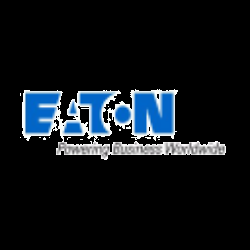Eaton demonstrates strong business quality through solid financial performance and a robust backlog. While there are supply chain concerns, growth prospects remain positive with significant investments in capacity and innovation. However, market weaknesses in certain segments may pose risks to achieving overall growth targets.
Analysis Date: January 31, 2025
Last Updated: March 12, 2025
Trailing Twelve Months (TTM) values provide a view of the company's performance over the last year.
Graham Value Metrics
Benjamin Graham's value investing approach focuses on finding stocks with a significant margin of safety between their intrinsic value and market price.
Intrinsic Value
Estimated fair value based on Graham's formula
$370.64
Current Market Price: $245.06
IV/P Ratio: 1.51x (>1.0 indicates undervalued)
Margin of Safety
Gap between intrinsic value and market price
34.0%
Graham recommended a minimum of 20-30% margin of safety
Higher values indicate a greater potential discount to fair value
ROE: 19.93798938462347
ROA: 2.5298976055860973
Gross Profit Margin: 38.194388616448265
Net Profit Margin: 15.250422059651097
Trailing Twelve Months (TTM) values provide a view of the company's performance over the last year.
Strong Return on Equity
A return on equity of 19.93% demonstrates effective management in generating profits from shareholders' equity, indicating a solid performance.
Healthy Gross Profit Margin
53.51%
Gross Profit Margin
With a gross profit margin of 53.51%, the company retains a significant portion of revenue after covering direct costs, showcasing operational efficiency.
Moderate Net Profit Margin
The net profit margin of 15.25% suggests that while the company is profitable, there may be room for improvement in controlling expenses.
About Profitability Metrics
Profitability metrics measure a company's ability to generate earnings relative to its revenue, operating costs, and other relevant metrics. Higher values generally indicate better performance.
Return on Equity (ROE)
Measures how efficiently a company uses its equity to generate profits
19.94%
10%
15%
Higher values indicate better returns for shareholders
TTM (as of 2025-04-16)
Return on Assets (ROA)
Measures how efficiently a company uses its assets to generate profits
2.53%
3%
7%
Higher values indicate better asset utilization
TTM (as of 2025-04-16)
Gross Profit Margin
Percentage of revenue retained after accounting for cost of goods sold
38.19%
20%
40%
Higher values indicate better efficiency in production
TTM (as of 2025-04-16)
Net Profit Margin
Percentage of revenue retained after accounting for all expenses
15.25%
8%
15%
Higher values indicate better overall profitability
TTM (as of 2025-04-16)
Strong Interest Coverage
36.16
Interest Coverage Ratio
An interest coverage ratio of 36.16 indicates that the company generates ample earnings to cover its interest expenses, reflecting a strong ability to service debt.
Reasonable Debt Levels
0.53
Debt-to-Equity Ratio
A debt-to-equity ratio of 0.53 suggests that the company uses moderate leverage, which indicates a balanced approach to financing.
Low Quick Ratio
The quick ratio of 0.96 is below 1, which raises concerns about the company's ability to cover short-term liabilities without selling inventory.
About Financial Health Metrics
Financial health metrics assess a company's ability to meet its financial obligations and its overall financial stability.
Debt to Equity Ratio
Total debt divided by total equity
0.53x
1.0x
2.0x
Lower values indicate less financial leverage and risk
Less than 1.0 is conservative, 1.0-2.0 is moderate, >2.0 indicates high risk
Q4 2024
Current Ratio
Current assets divided by current liabilities
1.50x
1.0x
2.0x
Higher values indicate better short-term liquidity
Less than 1.0 is concerning, 1.0-2.0 is adequate, greater than 2.0 is good
Q4 2024


